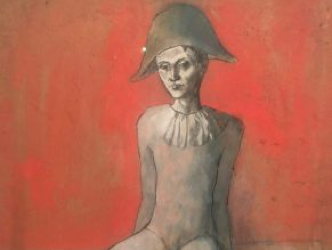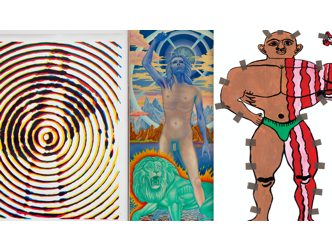Pablo Picasso lived to the age of 92. His total painting output is estimated to number over 4000 works.
It’s conceivable that he could have produced 120 paintings between the ages of 20 and 25.
At that time the young Spaniard was still himself a product of the 19th century in that he had been an intense observer of Cezanne, Degas, Van Gogh, Toulouse-Lautrec and others, from whom he drew inspiration.
Living in poverty in his little Parisian apartment on the Boulevard de Clichy, he nonetheless was driven by a fire of unusual intensity.
His entire upbringing – with an unsuccessful painter for a father and a mother who used to tell him: “if you become a soldier, you’ll be a general. If you become a monk, you’ll end up as pope” – was defined by the desire to achieve an exceptional level of excellence.
He produced art in an extravagant frenzy, even when he hadn’t the money to buy himself a canvas. His compulsion to work was so great that he would paint over one painting with another or paint on both sides of the canvas, as can be seen in the remarkable exhibition just opened at the Musée d’Orsay, with a double-sided painting from 1901.
The exhibition is entitled “Picasso: Blue and Rose” and brings together, it must be said, an exceptional number of masterpieces: 300 paintings, drawings, etchings, and sculptures are assembled here for a unique display, “one which is not likely to occur again,” emphasizes the curator of the exhibition who is also director of the Musée Picasso, Laurent Le Bon (1).
The conclusion to be drawn on leaving the Musée d’Orsay is that the Picasso of the blue and rose periods was not in the process of becoming. He was already a fully-fledged genius. “When it came to his work Picasso was constantly changing the game,” insists Laurent Le Bon.
In 1901 he produced a painting in fauvist colours which adopted an almost pointillist style shown at the Galerie Ambroise Vollard.
A few months later he descended into a long blue period, which began even before the suicide of his great friend Carlos Casagemas whom he depicted on his deathbed against a cobalt background, producing three works which have been brought together in Paris.
He wallowed in sombre subject matter with matching colour palettes, inspired by his visit to the Saint-Lazare women’s prison hospital.
His world was populated by these women, who were skinny, sick, and lonely. Then there’s the unmissable “Les pierreuses au bar” (Two Women Sitting at a Bar) (2), a sublime modern study of light and shade on loan from the Hiroshima Museum of Art.
Between 1904 and 1905 the light returns to Picasso’s work and with it a rose-pink hue is introduced that would take on various aspects.
A major room in the exhibition is dedicated to this new exploration, in the middle of which is enshrined “Fillette au panier de fleurs” (Young Girl with a Flower Basket), a nymph-like creature with a weary expression and the body of a young girl, from the David Rockefeller collection, which sold in New York last May for 120 million dollars. She presents herself with just as much sadness 113 years on.
The famous modern art dealer David Nahmad, who acquired the piece, talks about his love for this enigmatic painting.
Last spring, before the sale at auction, the young girl with the doleful expression had already captivated an eminent representatives of American institutions, Glenn Lowry the director of Moma, who regretted that the work wasn’t part of his museum’s collection.
And yet there’s one work of great importance and of a breath-taking nature missing from this exhibition at the Musée d’Orsay, and that is the piece that almost forms a matching pair with “Fillette à la corbeille fleurie”. The unsettling “Garçon à la pipe” (Boy with a Pipe) from 1905, sold by Sotheby’s in New York in 2004 for 104 million dollars, is a painting depicting a graceful young boy wearing a crown of flowers.
The bulge of his crotch and the title of the artwork, which in French is an allusion to a sexual act, give him – just like the doleful young girl – the appearance of someone who is selling their body.
The colours are bright and happy; the expressions of the figures less so. Even after a year of searching, Laurent Le Bon has had no luck in locating the work.
According to our sources it is in a Swiss collection and the deceased owner’s will forbade the painting from being revealed to the public.
How much longer will art history have to wait before the two most beautiful children of Picasso’s rose period are reunited once more?
(1) The Musée Picasso is simultaneously staging an exhibition on the meaning of masterpieces for the Spanish master. In February 2019 the Beyeler Foundation will be staging a smaller version of the Picasso Blue and Rose Period exhibition, featuring around 70 paintings.
(2) Prostitutes who sold their wares in quarries and urban wastelands.
Support independent news on art.
Your contribution : Make a monthly commitment to support JB Reports or a one off contribution as and when you feel like it. Choose the option that suits you best.
Need to cancel a recurring donation? Please go here.
The donation is considered to be a subscription for a fee set by the donor and for a duration also set by the donor.























